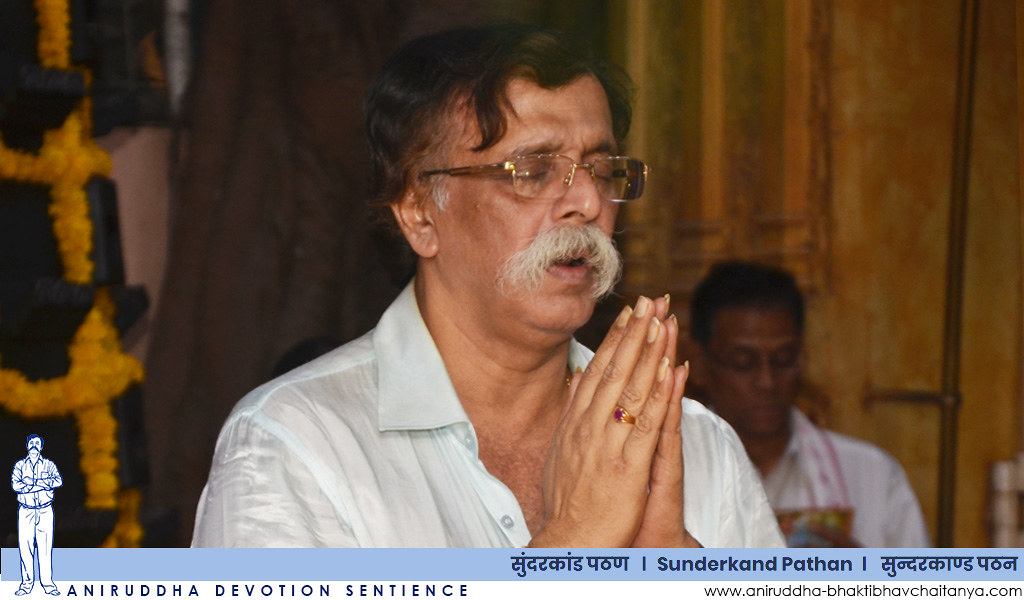Overview
Introduction to Sunderkand
Sunderkand is a revered scripture in the Hindu religion that holds immense significance. It is a chapter from the epic Ramayana, which narrates the journey of Lord Rama and his loyal devotee Hanuman. Sunderkand is known for its powerful verses and profound teachings. It is believed to bring peace, prosperity, and protection to those who recite it with devotion. The popularity of Sunderkand has led to its availability in various formats, including an Odia PDF version. This digital format allows easy access to the sacred text, making it convenient for devotees to study and understand the teachings of Sunderkand. The Odia PDF version of Sunderkand is a valuable resource for individuals seeking spiritual enlightenment and guidance.
Significance of Sunderkand
Sunderkand holds immense significance in the epic Ramayana. It is a chapter that highlights the journey of Hanuman to Lanka in search of Sita, the wife of Lord Rama. This chapter is considered to be one of the most important and revered sections of the Ramayana. Sunderkand showcases the devotion, strength, and determination of Hanuman in his mission to find Sita and bring her back to Lord Rama. The significance of Sunderkand lies in its portrayal of unwavering faith and loyalty towards Lord Rama, as well as the power of devotion in overcoming obstacles. It serves as an inspiration for devotees to remain steadfast in their devotion and to always seek the path of righteousness.
Summary of Sunderkand
Sunderkand is a chapter from the epic Indian scripture, Ramayana. It narrates the magnificent journey of Lord Hanuman in search of Sita, the wife of Lord Rama, who was kidnapped by the demon king Ravana. The chapter is filled with awe-inspiring events and showcases the immense power and devotion of Lord Hanuman. Through his unwavering determination and courage, Lord Hanuman overcomes various obstacles and ultimately finds Sita in Lanka. This remarkable tale highlights the importance of faith, loyalty, and Lord Hanuman’s grace in the face of adversity.
Historical Background

Origin of Sunderkand
The origin of Sunderkand can be traced back to the ancient Indian epic, Ramayana. Sunderkand is a chapter in the Ramayana that focuses on the heroic journey of Hanuman, the monkey god. The word ‘Sundara Kanda’ translates to ‘Beautiful Chapter‘ in English. It is considered one of the most significant chapters in the Ramayana as it showcases the extraordinary strength, devotion, and intelligence of Hanuman. Sunderkand is filled with captivating events and teachings that inspire and enlighten readers. It serves as a reminder of the power of faith and the triumph of good over evil.
Historical events related to Sunderkand
Sunderkand is not just a religious text, but also a collection of historical events that hold great significance. The story of Sunderkand dates back to the time of Lord Rama, the seventh avatar of Lord Vishnu. It narrates the journey of Hanuman, the monkey god, to Lanka in search of Sita, Lord Rama’s wife, who had been abducted by the demon king Ravana. The events described in Sunderkand showcase the bravery, loyalty, and determination of Hanuman as he overcomes numerous obstacles and challenges to fulfill his mission. These historical events highlight the power of devotion, faith, and righteousness, making Sunderkand a timeless masterpiece of Indian literature.
Influence of Sunderkand on culture and society
Sunderkand, a chapter from the ancient Indian epic Ramayana, holds immense significance in Indian culture and society. It is believed to have a profound influence on the lives of people who recite or listen to it. The recitation of Sunderkand is considered to bring positivity, peace, and harmony to individuals and their surroundings. It is also believed to ward off evil spirits and negative energies. The impact of Sunderkand is not limited to religious or spiritual aspects but extends to various facets of life. It has played a pivotal role in shaping the cultural, social, and moral values of the Indian society. The teachings and lessons embedded in Sunderkand have guided generations, promoting virtues like devotion, courage, righteousness, and compassion. This sacred chapter has become an integral part of festivals, religious ceremonies, and cultural events, showcasing its deep-rooted influence on the fabric of Indian society.
Characters in Sunderkand

Lord Hanuman
Lord Hanuman is a prominent figure in Hindu mythology. He is known for his unwavering devotion to Lord Rama and his incredible strength. Hanuman is often depicted as a monkey-faced deity, symbolizing his connection to the animal kingdom. In the epic Ramayana, Hanuman plays a crucial role in the search for Lord Rama’s wife, Sita, who has been kidnapped by the demon king Ravana. Hanuman’s bravery, intelligence, and loyalty make him a beloved character in Hindu literature. His story is widely celebrated and revered by devotees around the world.
Lord Rama
Lord Rama is a central figure in Hindu mythology and is considered the seventh avatar of Lord Vishnu. He is revered as the epitome of righteousness and is known for his unwavering devotion to duty. In the epic Ramayana, Lord Rama embarks on a journey to rescue his wife, Sita, who has been abducted by the demon king, Ravana. Sunderkand is a significant chapter in the Ramayana that describes the adventures of Lord Hanuman as he searches for Sita in the kingdom of Lanka. This chapter highlights the bravery, loyalty, and intelligence of Lord Hanuman as he overcomes various obstacles and eventually finds Sita. The Sunderkand book is a sacred scripture that narrates this chapter in detail, providing valuable insights into the devotion and valor of Lord Hanuman.
Other important characters
Sunderkand is not only about Lord Hanuman’s journey to Lanka, but it also introduces us to other important characters who play significant roles in the epic Ramayana. One such character is Vibhishana, the younger brother of the demon king Ravana. Vibhishana is known for his unwavering devotion to Lord Rama and his righteousness. He plays a crucial role in the battle between good and evil by defecting from Ravana’s side and joining Lord Rama’s army. Another important character is Jambavan, the wise and powerful bear king. Jambavan provides valuable guidance and support to Lord Hanuman during his search for Sita. His wisdom and strength make him an indispensable ally in the mission to rescue Sita. These characters, along with others like Sugriva, Angada, and Hanuman’s army of monkeys, contribute to the richness and depth of the Sunderkand narrative.
Themes in Sunderkand

Devotion and faith
Devotion and faith are integral aspects of human spirituality. They have the power to move mountains and create miracles. In the context of the epic Ramayana, the character of Hanuman exemplifies unwavering devotion and unshakable faith. Hanuman’s devotion to Lord Rama is unparalleled, as he tirelessly searches for Sita, Rama’s wife, in the demon-infested land of Lanka. His faith in the righteousness of his mission gives him the strength to overcome all obstacles and ultimately succeed in his quest. Hanuman’s selfless devotion and unwavering faith serve as an inspiration to all devotees, reminding them of the transformative power of devotion and faith in their own lives.
Courage and determination
Courage and determination are the key attributes that one must possess in order to fully understand the spiritual significance of Sunderkand. This epic chapter from the Ramayana showcases the unwavering resolve of Hanuman as he embarks on a perilous journey to locate and bring back Sita, Lord Rama’s beloved wife, who has been abducted by the demon king Ravana. Hanuman’s courage is evident as he fearlessly crosses the vast ocean, faces numerous challenges, and overcomes obstacles with unwavering determination. His unwavering faith in Lord Rama and his dedication to the mission make him an embodiment of courage and determination. Through his actions, Hanuman teaches us the importance of staying committed to our goals and facing adversity with unwavering resolve.
Triumph of good over evil
The Sunderkand is a significant chapter of the Hindu epic Ramayana, which narrates the journey of Lord Hanuman to Lanka in search of Sita, the wife of Lord Rama. This chapter is known for its portrayal of the triumph of good over evil. It showcases the extraordinary strength, courage, and devotion of Lord Hanuman as he overcomes various obstacles and defeats the demon king Ravana. The Sunderkand is filled with powerful verses and hymns that are often chanted or sung, known as Gaana. These verses invoke divine blessings and serve as a source of inspiration and spiritual upliftment for devotees. The triumph of good over evil depicted in the Sunderkand continues to be a timeless and cherished tale in Hindu mythology.
Literary Analysis

Poetic elements in Sunderkand
Sunderkand, a chapter from the Indian epic Ramayana, is a treasure trove of poetic elements. The composition is filled with rich metaphors, vivid imagery, and rhythmic verses that captivate the reader’s imagination. The author skillfully weaves together words to create a mesmerizing narrative that transports the audience to the enchanting world of Lord Hanuman’s journey. The use of similes and alliterations adds depth and beauty to the verses, making Sunderkand a masterpiece of poetic expression. The bold passages in this chapter highlight the most profound moments, emphasizing the emotional impact of the story and leaving a lasting impression on the readers.
Symbolism and metaphors
Sunderkand is a chapter from the epic Ramayana, written by the sage Valmiki. It is a significant part of the Hindu scripture and holds great importance in the hearts of devotees. Symbolism and metaphors play a crucial role in Sunderkand, adding depth and meaning to the narrative. The chapter explores the journey of Lord Hanuman to Lanka in search of Sita, Lord Ram’s wife, who had been kidnapped by the demon king Ravana. The symbolism in Sunderkand reflects the eternal battle between good and evil, showcasing the triumph of righteousness over darkness. Metaphors are used to depict the virtues of devotion, courage, and loyalty exhibited by Lord Hanuman throughout his quest. The mention of Odisha, the land where the chapter is said to have originated, adds a geographical significance to the story. The presence of Tulsi, a sacred plant, symbolizes purity and devotion. Sunderkand serves as a spiritual guide, inspiring individuals to overcome obstacles and remain steadfast in their faith, just as Lord Hanuman did in his pursuit of righteousness.
Narrative structure
The narrative structure of Sunderkand is a crucial aspect that adds depth and intrigue to the epic. It follows a well-defined pattern, starting with Hanuman’s journey to Lanka in search of Sita, the captive wife of Lord Rama. As the story unfolds, it beautifully portrays Hanuman’s encounters with various obstacles and his unwavering determination to complete the mission. The narrative structure also highlights the emotional and spiritual journey of Hanuman, showcasing his devotion, courage, and loyalty towards Lord Rama. It is through this structure that the readers are able to experience the magnificence of Sunderkand and the impact it has on the overall narrative of the Ramayana.
Impact and Legacy

Influence on literature and art
The epic tale of Sunderkand holds great significance in Hindu literature and art. It has influenced countless writers, poets, and artists throughout history. The profound teachings and spiritual insights found in Sunderkand have inspired the creation of numerous literary works and artistic masterpieces. The story’s portrayal of devotion, courage, and determination has captivated audiences for centuries. Hindu scholars and enthusiasts have delved deep into the verses of Sunderkand, extracting profound meanings and interpretations. The impact of Sunderkand on literature and art is undeniable, as it continues to be a source of inspiration and creativity for generations to come.
Religious and spiritual significance
Sunderkand is a significant chapter in the epic Ramayana. It holds immense religious and spiritual significance. The word ‘Sunderkand’ literally translates to ‘beautiful chapter’ and it is indeed a beautiful and enchanting part of the Ramayana. Sunderkand is a collection of poetic verses that describe the journey of Hanuman to Lanka in search of Sita, Lord Rama’s wife. These verses are often recited or sung as a form of prayer and devotion. The lyrics of Sunderkand are filled with devotion, courage, and determination. They inspire and uplift the hearts of the devotees. The recitation of Sunderkand is believed to bring blessings, protection, and success to the devotees. It is a powerful tool for spiritual growth and connection with the divine. If you want to explore the magnificence of Sunderkand, dive into the mesmerizing lyrics and experience the profound spiritual journey.
Continued relevance in modern times
Sunderkand, a chapter from the epic Ramayana, continues to hold immense relevance in modern times. This sacred text, composed by sage Valmiki, narrates the journey of Lord Hanuman to Lanka in search of Sita, the wife of Lord Rama. Sunderkand is not just a religious scripture but also a source of inspiration and guidance for people in their daily lives. It teaches us the importance of unwavering devotion, courage, and selflessness. The story of Lord Hanuman’s unwavering dedication to Lord Rama serves as a reminder of the power of faith and the ability to overcome obstacles. Sunderkand also highlights the significance of teamwork and the strength that can be achieved through unity. In today’s fast-paced and challenging world, the teachings of Sunderkand remind us to stay connected to our roots, uphold moral values, and strive for righteousness.
Author Profile

Latest entries
- 28 June 2025BlogHow to Choose the Best High-Yield Savings Account with 5%+ Interest in India (2025 Guide)
- 28 December 2024Blog13 High CPC Blog Niche for 2025
- 28 December 2024BlogTop 6 Employee Management Software for Small Businesses
- 19 December 2024BlogShri Hanuman Chalisa in Hindi Text with English Translation

